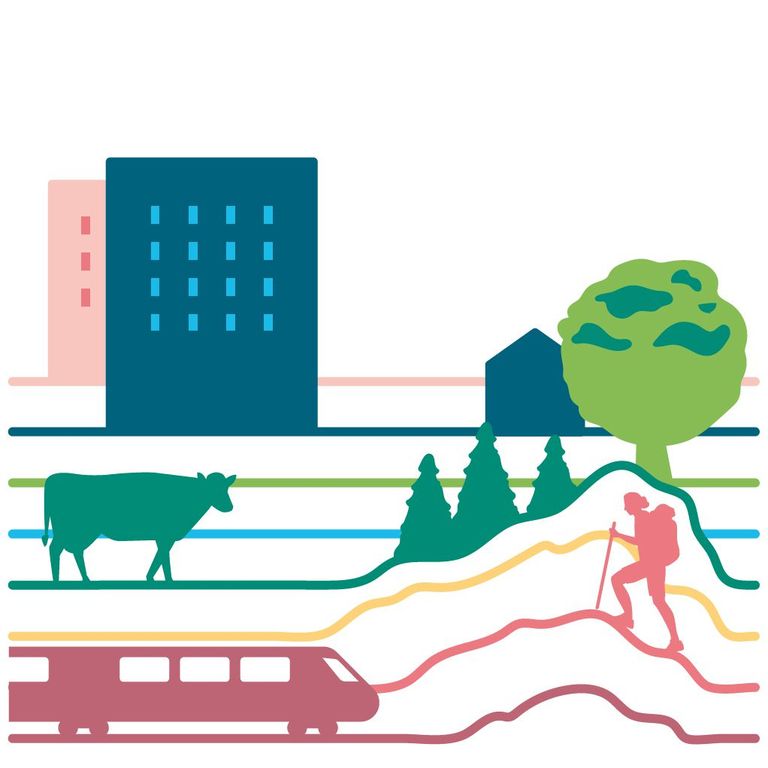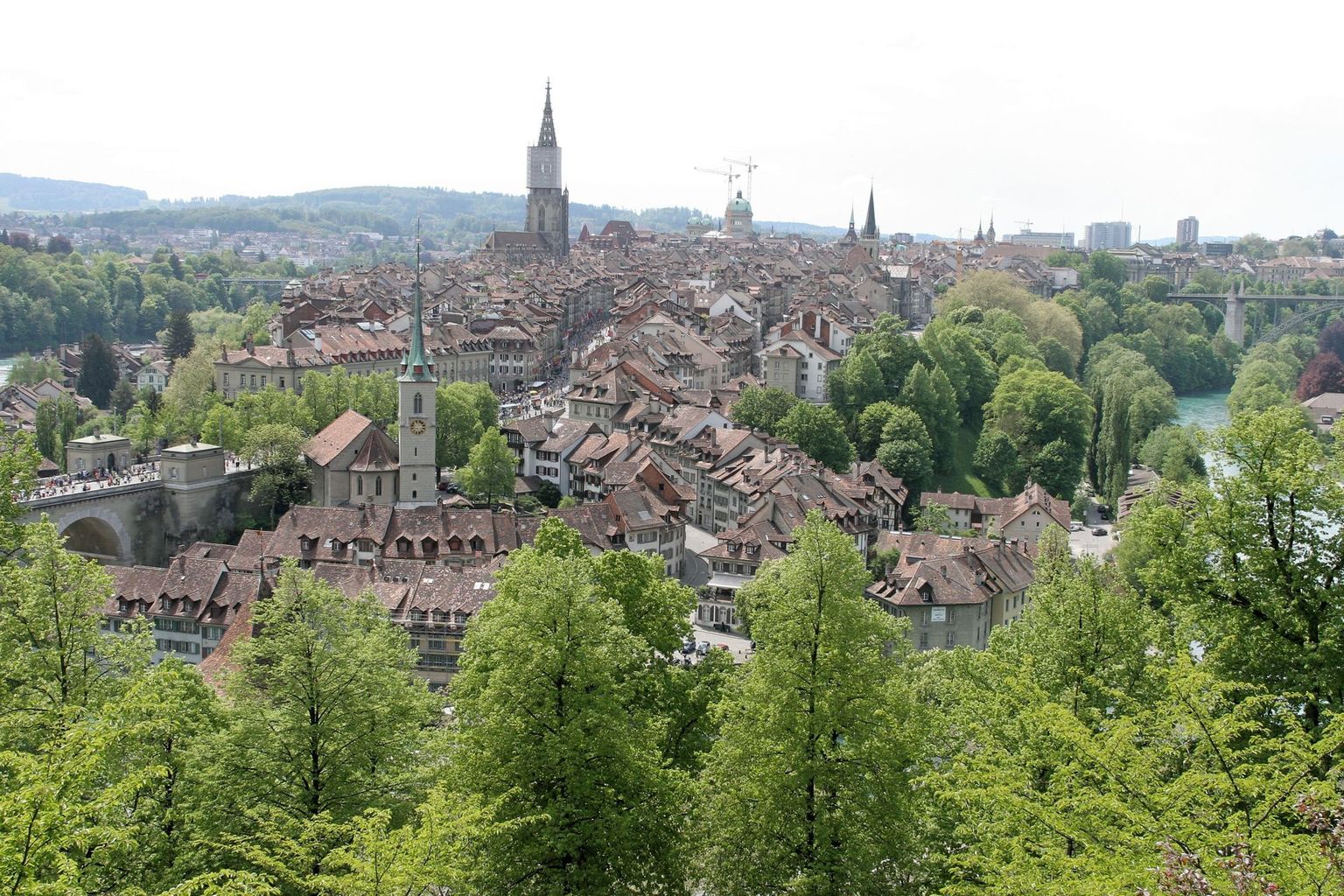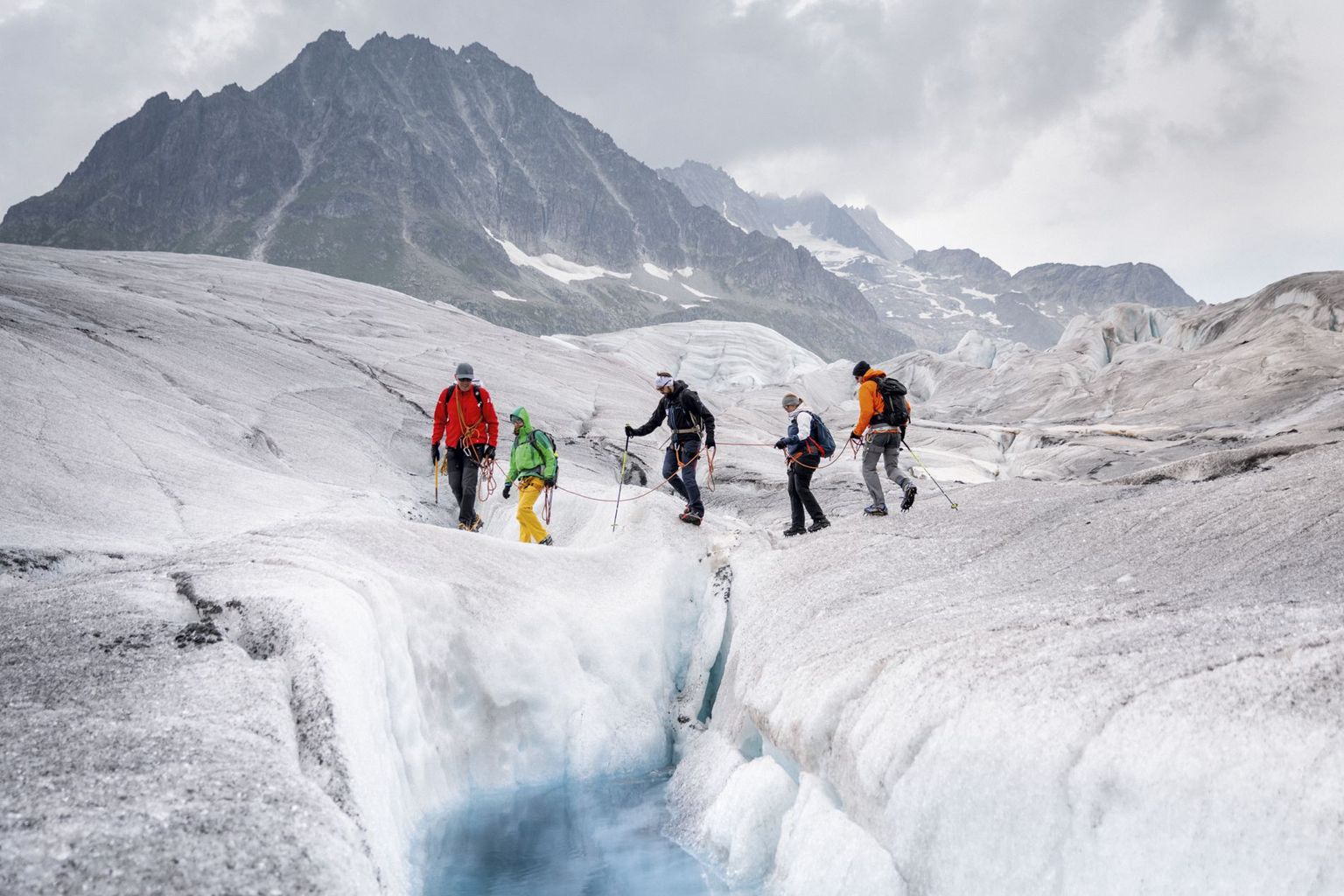Landscape in the Network of Spatial Relationships

Many regions have spatial relationships with one another. But how do spaces that are often regarded as opposites influence one another – for example, city/countryside, mountain regions/lowlands, parks/non-parks, and even Switzerland/other countries? Can the inhabitants be motivated to engage in mutually complementary cooperation? These questions are not only relevant in relation to the effects of globalisation; they also play a key part in Switzerland's social cohesion.
Spatial complementarity can have both positive and negative effects. For example, the urban population likes to go to rural regions for relaxation; conversely, rural areas benefit when visitors from the city contribute to local value creation.
However, not all the effects of relationships between complementary spaces are beneficial. For example: flora and fauna sometimes suffer in areas close to nature that are increasingly used for recreation. In some cases, these reciprocal relationships also create tensions within the population: the Second Home Initiative, for example, met with great support in the cities, which were thus able to outvote the tourist areas where the attitude was negative. The new Hunting Act was also rejected thanks to votes from regions with an urban character, leading to accusations that their populations failed to understand the concerns of people in rural areas.
The question that is often behind such conflicts is, Who ultimately decides over whom? Do the lowlanders have disposal over the resources in the mountain regions? Or, on the contrary, do the sparsely populated peripheral regions only remain able to function thanks to contributions from the centres?
Relationships between areas with similar profiles that were originally desired and deliberately fostered can also turn into competition that erodes regional diversity. This can happen if a region with a unique selling point is imitated by others seeking the same effect (which is often of an economic nature).
When addressing spatial relationships, questions as to what is genuine and unadulterated play an important part. The fundamental question that arises is, Who has the power of definition? But in a relationship fraught with tensions – such as the one between the mountains and the lowlands – it is difficult to determine what should be preserved as 'genuine' and authentic, and where innovations should be allowed. For example, is it the outsiders who perceive the traditions and landscapes of the past as authentic? Or is it the natives who recognise 'genuineness' as their region's ability to develop according to their needs?
The aim should therefore be to acknowledge existing relationships both between the spaces and between the people who are impacted and involved; we should also explore how these connections have changed over time, and what impact these changes are having.
FoLAP identifies four spatial dualities that are of particular importance due to their influence on landscape.
The relationship between Switzerland and other countries, both near and far, is characterised by a variety of economic interdependencies. Reciprocal tourism relationships are especially important with regard to the landscape. It is thanks to Switzerland's attractiveness that it has evolved into a tourist destination for domestic and foreign visitors. This raises the question of how tourist demand can be expected to affect the development of the offering. Conversely, consumer decisions by the Swiss public influence the landscape in other countries around the world.
The tensions between the Alps and the lowlands represent the second field of investigation where FoLAP sees the need for work. What is needed to foster communication and mutual understanding between these regions? This also raises the related question about the influence of subsidy policy and increasing regionalisation. Another issue that should be explored is the relationship between natives and second-home owners. How do people who only spend their leisure time in the mountain region view the landscape and its development – and how is this perceived by those who live here permanently or who grew up here and later moved away?
The third duality concerns the relationship between parks and non-parks. What impact do parks of national significance have? Do they really have a higher landscape quality – including greater biodiversity – or is it rather the case that the label sharpens people's perception, making them more attentive to landscape characteristics? How can the knowledge gained from studies of this sort be used to influence the population's attitude towards the landscape?
Finally, there should also be a focus on the relationships between populated and natural areas, which are particularly pronounced in the Mittelland region. This is because for a long time, the steady expansion of settlements, together with other interventions such as the drainage of wetlands, has proceeded at the cost of near-natural areas. Recent years have nevertheless seen an increase in renaturing measures which (to some extent) give more space back to nature, even in the agglomerations. In this context, we should ask how the growing pressure exerted by the population is impacting the landscape quality of natural areas, and how the population's expectations
In FoLAP's view, spatial relationships are highly relevant in political and economic terms, because there is a risk that the tense relationships between the mountains and the lowlands (but also between the city and the countryside) will be exacerbated. For this reason, FoLAP should help to move this issue onto the agendas of national, regional and local players. Through our network, we create relevant knowledge for spatial planners and the parties responsible for the parks.
Authors: Marcel Hunziker (WSL) & Astrid Wallner (CDE), Angelika Abderhalden (UNESCO BIOSFERA Engiadina Val Müstair), Karin Hindenlang (Wildnispark Zürich), Matthias Stremlow (BAFU)
Projects/Events
Notes: In its five core topics (Landscape and Health, Landscape Culture, Lifestyles and Landscape, Climate Protection and Landscape, and Spatial Relationships), FoLAP has identified aspects where action is most needed in terms of sustainable landscape development. To promote political discourse and the social transformation process, there is a need not only to pool existing knowledge but also to invest more extensive effort in additional research and to step up the dialogue between research and practice. FoLAP understands the core topics as its own mission, and a mission for its community: they therefore appear on FoLAP's agenda as an invitation to institutions and players to become actively involved in these topic areas
From FoLAP's perspective, the whole set of issues linked to 'spatial relationships' has high political and economic relevance because there is an increasing risk that the tensions between mountains and lowlands – as well as urban and rural areas – will boil over.
Especially as regards parks of national importance, it is important that the evaluation following the second operational phase of the parks should be approached not only on a park-specific basis, but also holistically. This would allow an overall assessment of the question, 'What benefits are delivered by "parks" as an instrument?' The question we have raised about the importance of parks as players in the landscape competence context should be at the centre of such an assessment. Thanks to the LABES (Swiss Landscape Monitoring Programme) and ValPar.CH (Values of the ecological infrastructure in Swiss parks) projects, data is available to drive an evaluation forward in this direction.
Relevant key issues, challenges and approaches
For FoLAP's work in the coming years, we have identified four spatial dualities that raise particular challenges and key issues; among other factors, the mutual relationships between actors and their influence on the region and landscape play a role here.
Of necessity, these dualities are overstated, simplified and exemplary in nature, and they need to be deepened, differentiated and also amplified as they are given further consideration. Thus, for example, the same dualities sometimes exist on different scale levels (urban elements in the mountains, or mountain culture in the city).
Accordingly, the examples should primarily prompt consideration of the dimension of spatial relationships in a very diverse range of thematic fields, together with analysis of the influence exerted by these relationships on the topic in focus, e.g. on landscape and regional development.
One topic that could not be more diverse is that of (spatial) relationships between Switzerland and other countries, both nearby and further afield. First and foremost, these include economic interdependencies of all kinds.
Tourism is one such topic that has very strong spatial and landscape relevance. In this case, landscape quality is regarded as a quality of Switzerland as a location; this generates not only domestic tourism but also – in particular – international tourism, which in turn extends from neighbouring countries to distant regions.
What effects does international tourism demand have on the development of the offering, including specific landscape interventions (e.g. artistic installations in the high mountains)?
What impact do changes in the offering (e.g. triggered by glacier retreat) have on tourism demand (and thus on regional economic development)?
Telecoupling, as it is known, is a somewhat indirect spatial relationship: consumption patterns in Switzerland generate changes in land usage (which are ecologically problematic in some cases), as well as large-scale landscape changes in distant regions where the products in demand in Switzerland are produced (the 'avocado hype' in Switzerland is one example).
Which lifestyles and consumption patterns cause the greatest landscape changes (as well as ecological and social problems) in other parts of the world?
This topic was only given superficial attention in the authors' group, but it could be addressed in greater depth within the framework of the expertise available in FoLAP, where it could perhaps be developed further in close connection with the core topic of 'Lifestyle'.
Recent years have seen an exacerbation of the general tension that exists here, as was particularly evident in the votes on the Hunting Act and the Second Home Initiative. One focus in this context is on questions relating to governance.
What requirements and expectations does the mountain population have in terms of regional and landscape development not only in the mountain region, but also in the lowlands and especially in (peri-)urban areas? What does the mountain region need so that its interests are also recognised at the political level in the lowlands?
What requirements and expectations does the lowland population have in terms of regional and landscape development not only in the mountain region, but also in the lowlands themselves, and especially in (peri-)urban areas? What approach has to be taken so that the interests of the lowlands are also appreciated at political level by the people in the mountain regions?
Questions then arise about the influence of subvention policy and that exerted by increasing regionalisation.
We also focus on internal migration. Identification constitutes a key issue here. Owners of second homes whose principal place of residence is in the lowlands but who spend holidays and weekends in the mountain regions, people originating from the mountain regions who have become habitual residents of the lowlands during the week, and also the 'New Highlanders' who newly shift the focal point of their lives from the lowlands to the mountains: all of these people are internal migrants.
This gives rise to questions about identification with the region and the landscape at the point of origin and the destination of the migration, and about the perception and assessment of changes in both locations.
The issue of digitalisation also plays an important part here:
Can mobility be reduced by digitalisation? Can new living and working models be successfully established in the Alps through digitalisation (workplace with a mountain backdrop instead of an industrial park)?
What is the impact of influencers who can trigger an onslaught of tourists with pictures on social media?
The key questions here are:
What is the effect of the 'parks of national importance' instrument?
Does it lead to a higher quality of landscape (including greater biodiversity)? Or does the change mainly take place in people's minds because a park sharpens public perception of landscape?
If the 'parks' instrument succeeds in influencing the population's attitude towards the landscape, and if visitors as well as the resident population find that the park offers them what they expect based on their ideas, will this also lead to longer-term changes relating to nature and landscape?
Seen in this light, parks are not only model regions in terms of sustainable development, but also important players in the field of landscape competence.
Comparative regions are needed to investigate these changes in the population's perception of landscape and the resultant changes relating to nature and landscape. Areas where original ideas for a park were already rejected at an early stage could play an important role here. A first study of this sort was carried out by Frick and Hunziker (2015). This approach could be expanded in terms of content and geographical scope.
It is important to note that most parks are now transitioning into their second operational phase. This means that awareness-raising in municipalities and among the population about topics such as landscape perception, biodiversity and also the economic importance of the parks should take place now. It is therefore crucial for surveys of landscape perception to be undertaken now, to ensure that a comparative value will be available for a subsequent evaluation in 10 years' time.
We discern a new spatial dichotomy in the Mittelland region: natural space versus populated space. For a long time, the constant expansion of settlements and other interventions in nature and landscape (keyword: land improvements) has led to displacement of the natural environment. Especially in the last 20 years, however, we have seen an increase in renaturing measures that often restore more space to nature in places where people live (keyword: urban hiking). This also includes the aspect of Landscape and Health: population growth and a greater need for health are increasing the value of nature as recreational landscape (keyword: coronavirus). However, this entails increased visitor pressure and expectations of natural spaces.
What influence does the higher pressure exerted by the population have on the landscape quality of the natural spaces?
What expectations do visitors have regarding the landscape and its qualities?
How can they be met without neglecting the qualities of natural spaces and the related goals?
On request, we will send you the complete core topic papers including references to sources. (The core topic papers are expanded and edited from time to time.)
Write to us at folap@scnat.ch



